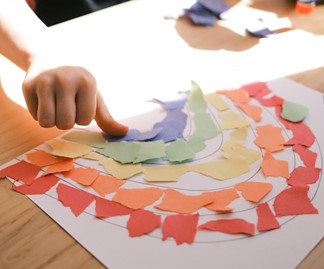
As far back as 2009, it became clear that the United States was going through a period of cultural and artistic stagnation. Across the country, school districts were forced to cut funding for the arts, symphonies and operas lost grants, and museums were pushed to reduce their staff. Today, Travis Preston of CalArts explains how the effects of this linger as the nation wrestles with an ongoing creativity crisis.
Rather than encouraging artistic and musical expression, draconian state curriculums have regulated educators to instead focus on purely utilitarian subjects. The unfortunate result of this, though, is that students fail to develop creative problem-solving skills, critical thinking, and a sense of collaboration. This will likely have long-term effects on the nation and its ability to innovate as a whole.
Budget Cuts Killed the Arts
The last decade wasn’t exactly friendly to the American education system. Between 2008 and 2015, total federal spending on primary and secondary education dropped by more than $28 billion, representing roughly a 30% budget cut compared to the previous decade. While it’s difficult to parse out whether this was a result of the economy of educational reforms, what is certain is the effect it’s had on school curriculums and students.
When faced with startling funding cuts, many school boards were forced to assess where they could cut costs. Rather than reducing math, science, and English courses, they instead took funding from music programs and art classes. In many schools, this meant firing the teachers and removing the courses entirely.
Today, 12% of American secondary schools do not provide any art classes, while another 12% only offer 1 of the 4 artistic disciplines (visual arts, music, theater, dance). In terms of real numbers, that means that almost 4 million high schoolers will graduate every year without sufficient exposure to the arts or a means of creative expression.

Effects of the Creativity Crisis
A lack of art and music in school isn’t a problem simply for the sake of aesthetics, it’s having a direct impact on the future of the nation. Creativity isn’t just an outlet for expression—it’s an indicator of future innovation, curiosity, risk-taking, collaboration, and open-mindedness. All of these factors are essential to successful business and politics.
By robbing students of the skills and knowledge needed to become open-minded, collaborative, and innovative people, school boards have created a hoard of myopic and overly analytical workers rather than creative souls capable of shaping and building a better future. And this isn’t meant to be hyperbolic.
Over the past 60 years, researchers have tracked creative IQ scores, and global creativity has continually dropped since the 1990s on a consistent statistical trend. At the same time, Hollywood has become dominated by sequels and remakes, while our politics have returned to the same arguments fought decades before.
The Bottom Line
The creativity crisis isn’t just an appeal to the arts—it’s an appeal to restore creativity to a world facing ever-more-complicated challenges. If we are to overcome the mounting obstacles of the 21st century, we must educate students to become creative, innovative, open-minded, and collaborative members of society.
